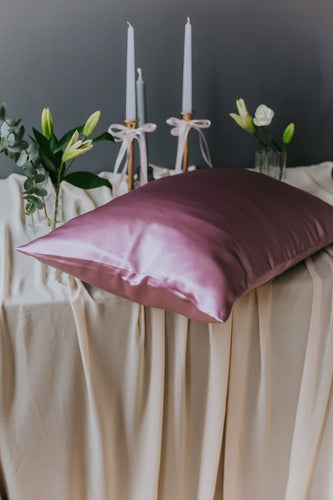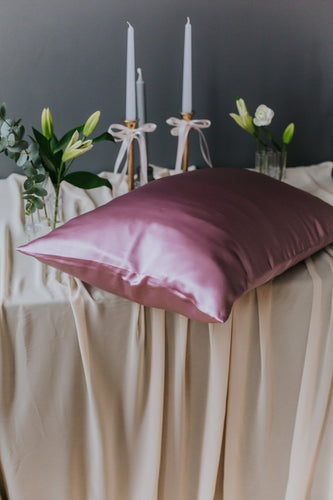What is silk, artificial silk and satin?
First of all, each of these terms means something different and they are definitely not synonymous as it might seem. Secondly, stores or people who want to sell just for sale or simply do not know the difference, take advantage of customers' ignorance about these terms in order to sell more. In this way, more and more are confusing the consumer, who is not familiar with the differences between the terms.
One of the best books to find information about different types of fabrics and fibers is Fashionpedia
Blog article content
• Silk fiber and silk fabrics
• Artificial silk
• Satin fabric
From time to time, in conversations with customers, I understand that there is a need to explain these terms, because despite the fact that the product descriptions indicate the composition of the product, customers still ask whether a particular product is really silk or satin. To which I have to answer that it is both silk and satin. Therefore, currently, being in the profession and in my professional career, I try to explain as clearly as possible.
So let's get down to unraveling these terms, because this topic is now as relevant as it was 10 years ago.
Silk fiber and silk fabrics
Silk is a natural fiber that is obtained mainly from the larva of the Mulberry silkworm. It is a filament fiber, which means that it is a very long fiber - from 500 to 1500 m. 10-13 microns in diameter. It is one of the oldest known and widely used fibers. Silk fiber is soft and smooth, so the fabrics will also be soft.
Silk can be used in the production of fabrics such as chiffon, organza, mikado, taffeta, satin, velvet, charmeuse, etc. Silk has a distinctive crunch, by which you can distinguish silk from other materials.
When purchasing silk fabric or clothing, the label (tag) will indicate the percentage of silk, for example, 100% silk or 50% silk and 50% linen, etc. variants. The percentage composition of the material/clothing must be indicated by the fabric manufacturer and the clothing manufacturer.
To check whether your fabric is really silk, the easiest option is to burn a piece of fabric and by smell, burning and ash it is definitely silk or not. Silk is a protein, so the fabric will burn well, similar to human hair, forming loose, crumbly ash. Of course, you will not burn clothes in a store, so it is important to look at clothing labels, because you can not always visually tell the composition of clothing fabrics, especially if you do not have experience with different types of fabrics.
Artificial silk
First of all, it should be said that artificial silk is quite far from natural silk and has nothing to do with natural silk.
This term arose at a time when viscose fiber was discovered, which could replace expensive silk. Polyester fabric was also called artificial silk.
Therefore, the term "artificial silk" should be understood as a fabric made of polyester or viscose fibers, if it is thin enough, shiny and soft. It is precisely the shine and softness that are the only properties that somewhat resemble silk. Both viscose fabrics and polyester fabrics can be made very pleasant and soft in contact with the skin, to such a similarity that an uninitiated person cannot say that the material is, after all, not natural silk.
During my studies, professors regularly pointed out that there is no such fabric as artificial silk and this term practically does not mean anything - there is no such fiber and no such type of fabric. There is polyester fiber and satin fabric, so you should avoid using an inappropriate term.
As I mentioned earlier, the purchased clothing will always have a label with the fiber composition, for example, in this case, 100% - viscose or polyester and will never be labeled "artificial silk".
Those who purchase fabrics for their creative works and it is important to purchase natural fiber fabrics, should definitely ask and check in the store whether the fabric in question is silk (or any other). And do not give up if the seller says that a fabric is artificial silk. It is important for you to find out the composition of the fabric and the type of fabric.
Satin fabric
If I talked about silk, polyester and viscose fibers earlier, then satin is not a fiber. Mainly, fabrics are woven in two directions in width (weft) and length (warp). Satin is one of the types of fabric weave - the way the warp intersects with the weft. Satin fabric is characterized by a smooth and shiny one side of the fabric and a matte one on the other. The shine is created by this special satin weave.
For context - There are quite a few fabric weaves and the most famous are plain weave, satin weave, jacquard weave and twill weave. Satin fabric is indeed soft, but this does not mean that it is silk.
Satin weave fabrics can be made from cotton, polyester, silk, etc. Most often, satin fabrics are made for bed linen precisely because of their soft and shiny surface. If the question is: "What is the composition of this bed linen", then the answer should be about the fiber composition, not the type of fabric.
You may have felt on your skin that satin is very cold. It is mainly made of polyester fiber, whereas silk satin will initially feel cool, but later will be very pleasant. This is due to the excellent thermoregulation properties of silk - it will cool you down pleasantly in warm weather, but will provide you with pleasant warmth in cool weather.
Silk satin will be extremely soft, because silk itself is already soft and adds woven in a satin weave creates an even softer and smoother feel. This combination is especially beautiful when sewing light silk dresses, blouses and nightwear, which create a graceful, luxurious and especially delicate look.
In our store section you will find products made of silk satin and silk jacquard fabrics.
Do you have questions?
You can write your question on this topic in the comments section. You can also suggest a topic that interests you.
Materials used, which you can read additionally
• Fashionpedia. Link to the company's page https://fashionary.org/
This is my most frequently opened book :) It contains short and concentrated information about the important things - fibers, extraction, processing, recycling and fabrics. You can also buy dozens of other fashion-related books and figure illustrations for drawing sketches at Fashionary.




